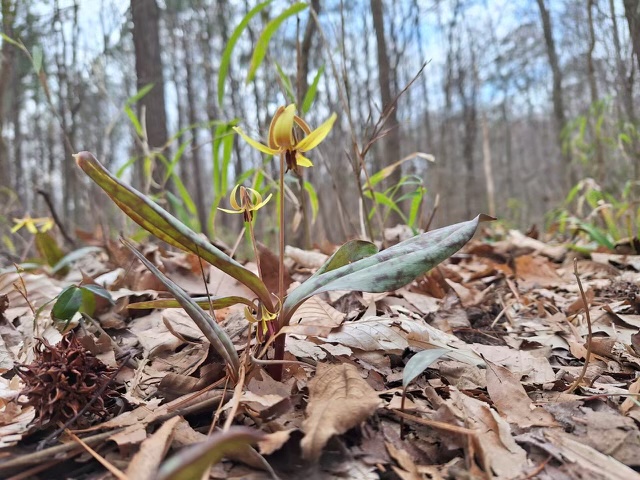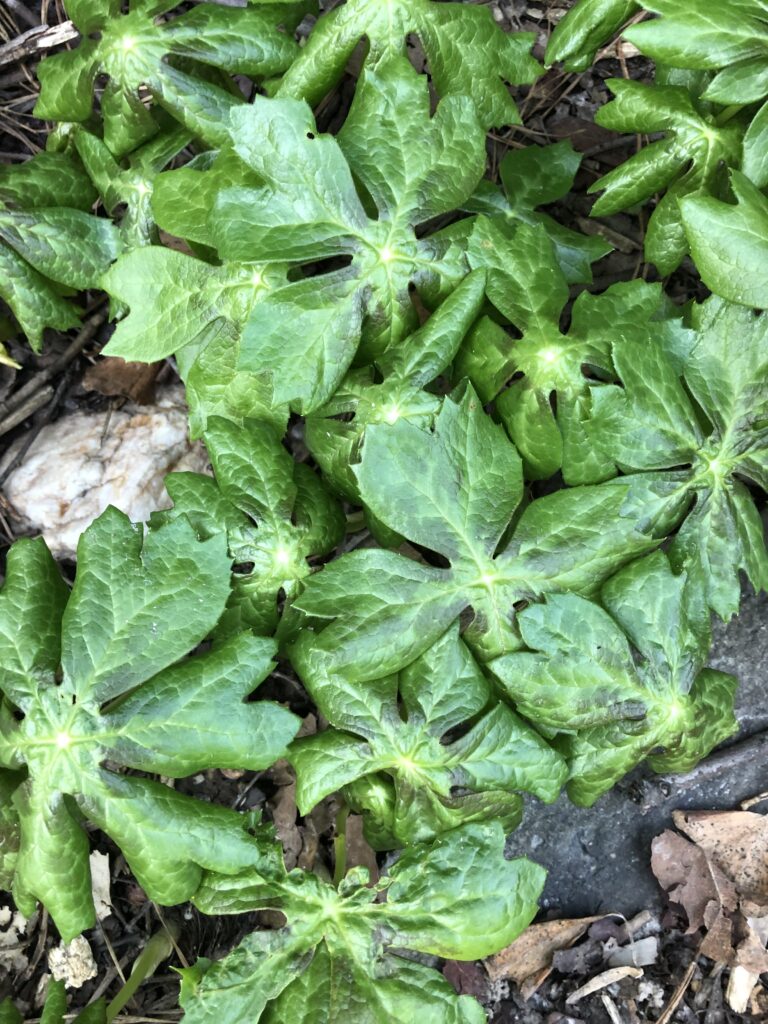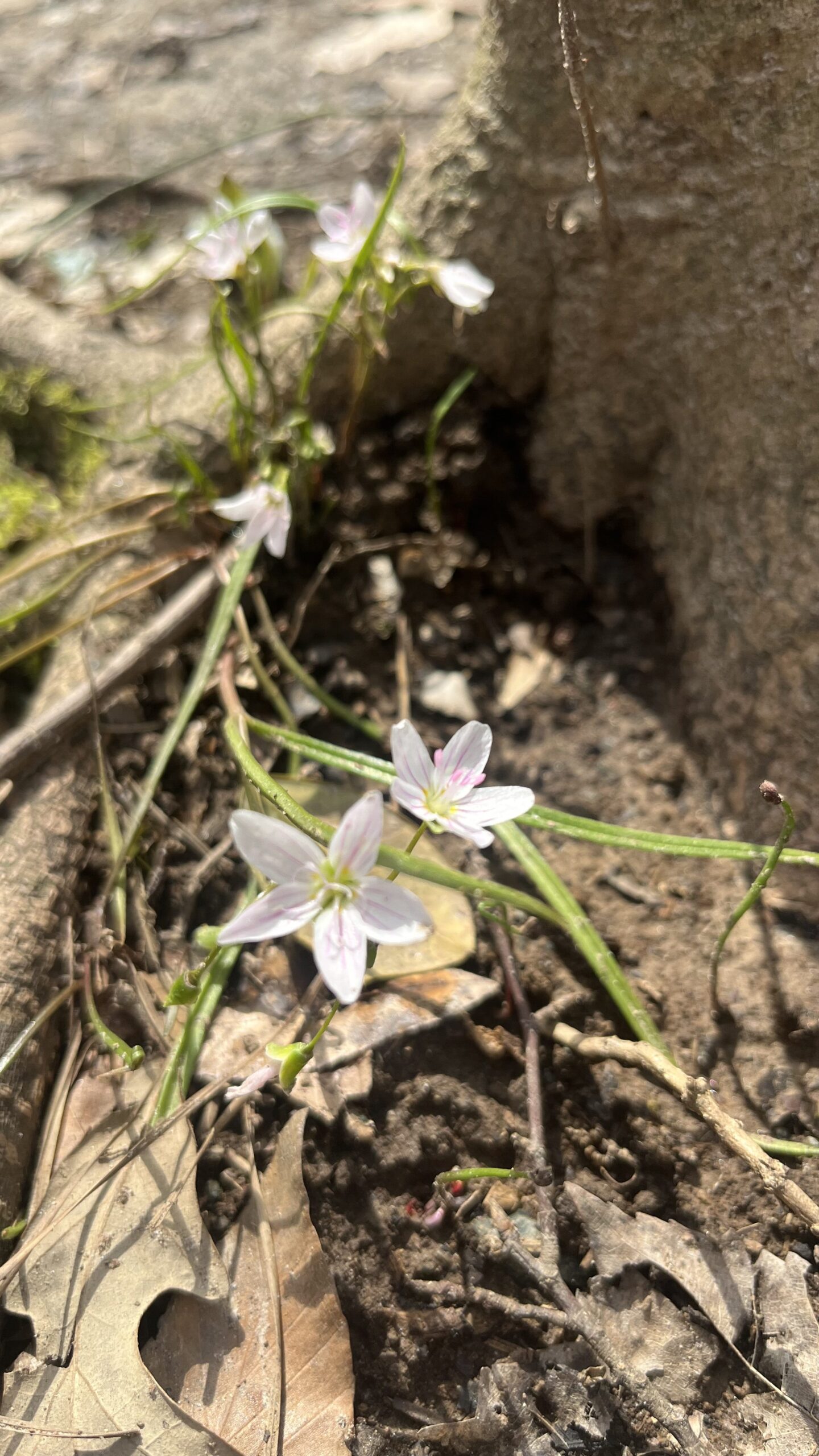
By Laura Warman, Grants Manager
If you’ve had a chance to get outside recently, you will have noticed it definitely feels like spring has arrived. And, you’re not alone- the spring ephemerals are all waking up and announcing the end of winter.
Spring ephemerals are a group of plants that emerge early in the spring and, as their name suggests, usually bloom and then disappear relatively quickly. As a group, these plants share a similar ecological strategy- just like the early bird might get the worm, by being the first to emerge, ephemerals are able to make the most of sunny conditions on the forest floor. These conditions are short-lived themselves, and quickly disappear once the trees and shrubs leaf out and bring back shade to the understory.
I’ve always thought that “ephemeral” gives the impression that these plants are delicate, fragile and wispy, but they are actually tough little plants! Emerging in late winter/early spring means that ephemerals have to deal with more variable conditions than do other plants. These include being active in colder soils than other plants will tolerate, late freezes, big temperature swings, surprise hot weather (like we’re having now) or dry conditions, in addition to most pollinators still being asleep or overwintering in warmer climes. To deal with these conditions, spring ephemerals have developed a lot of amazing strategies.
Collaboration is key
Once they emerge, ephemerals need to use the short window of sunny and relatively warmer conditions on the forest floor to not only bloom, but also to photosynthesize and store away enough energy to last them through the rest of the year, grow their roots systems underground, and to emerge again next spring. One of the ways that many ephemerals manage this, is by working closely with other species. These associations include mycorrhizae – symbioses between plant roots and fungi- that allow the plants to take up nutrients more efficiently, and associations with ants and the earliest pollinators like bumble bees. Both bloodroot and trout lily seeds have elaiosomes, protein and lipid rich structures that attract ants and encourage them to disperse the seeds. Other species, like trilliums and mayapples depend on larger dispersers- like deer and box turtles respectively.
While it might be tempting to pick the ephemeral flowers in early spring- please think twice before you do! Each flower represents the plants’ chance to reproduce, and some plants- like trout lilies sometimes need to grow for 7 or 8 years before they have enough energy to put out that single blossom.
Searching for ephemerals:
Swift Creek Bluffs, Flower Hill, and White Pines are all great places to see ephemerals blooming right now- this includes trillium, bloodroot, trout Lilies, as well as bluets, Virginia bluebells and spring beauties.
While out, you might also see maples flowering, redbuds and spice bushes. But does it seem a bit early? While early springs are not an unusual occurrence, this year it comes at the end of a record-breaking warm winter. According to NOAA, the average temperature in the lower 48 was 5.4 degrees above the 20th century average, and February was 7.2 degrees above average. This has led to plants leafing out almost 20 days early, according to the National Phenology Network. One of the problems that warmer and earlier springs bring with them, is that as the canopy fills out earlier this shortens the window for spring ephemerals, limiting the time they have to store energy and reproduce. Likewise, these conditions can increase the odds that spring associations and interactions between plants and animals fall out of synchrony- what biologists refer to as a “temporal mismatch”. In other words, the bees may wake up before the spring ephemerals are there to feed them, or the spring ephemerals may have no one to pollinate them or disperse their seeds.
By protecting almost 25,000 acres of land, TLC is safeguarding a wide variety of habitats and places with an array of local environmental conditions. This helps ensure that we are protecting many places that spring ephemerals need to survive. Thank you for supporting us as we strive to protect habitats in the Triangle!


